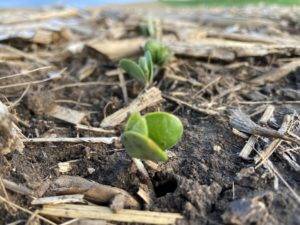 Variable rate (VR) seeding in corn has been a frequent topic of conversation for years, but now that conversation is shifting to VR seeding soybeans. Before planting VR seeding soybeans, we must change the way we think.
Variable rate (VR) seeding in corn has been a frequent topic of conversation for years, but now that conversation is shifting to VR seeding soybeans. Before planting VR seeding soybeans, we must change the way we think.
When your yield potential goes up in a corn field, we increase population. When corn yield potential goes down, we decrease population. Makes sense, right? It’s the opposite for soybeans. When yield potential increases, lower your planting rate in a soybean field. When your yield potential decreases, increase the planting rate. Our trials to date have shown the most return on investment in lower-yielding environments where population was decreased.
Why invest more in a geography where yield potential is less for soybeans? There’s good reason! Percent germination in soybeans is one big reason.
When you plant tougher areas in the field, you’re not going to achieve 100% of your germination rate. Now think of your high yielding areas in your field… There is a much greater chance you will achieve close to 100% germination there. High-yielding areas typically have better soils and drainage, so it makes sense to plant more seed in low-yielding areas to increase the germination rate.
We enjoy sitting down with farmers and talking about whether VR planting is right for them. Our Data Forward™ team is here to help you get comfortable with implementation. Phil Long and I love to do On-Farm Trials in your own fields, so this could be a good starting place for farmers wanting to experiment with lower seeding rates. We can experiment on a smaller scale while placing learning blocks throughout the field. Using learning blocks and on-farm research allows us to compare different zones of a farmer’s field and to also compare to previous years.
Imagine the savings if we can drop soybean planting populations by even 20,000! The savings from reducing planting rates from 160,000 to 140,000 can then be invested into seed treatment or something else that protects yield and helps you achieve optimal germination. This allows farmers to continue to achieve higher yields while lowering planting populations.
Give your Precision Agronomy Advisors a call today! Let’s start a conversation about conducting on-farm research.
